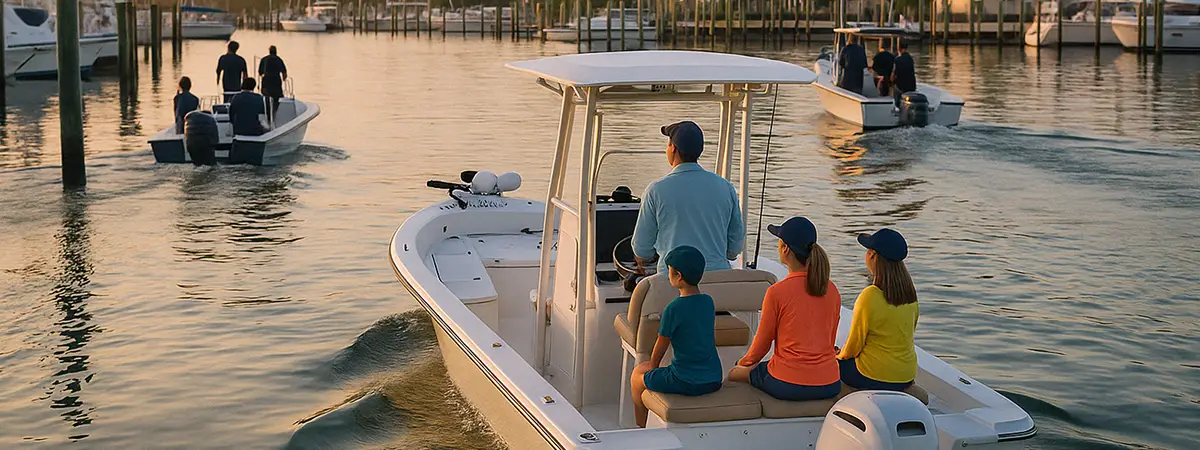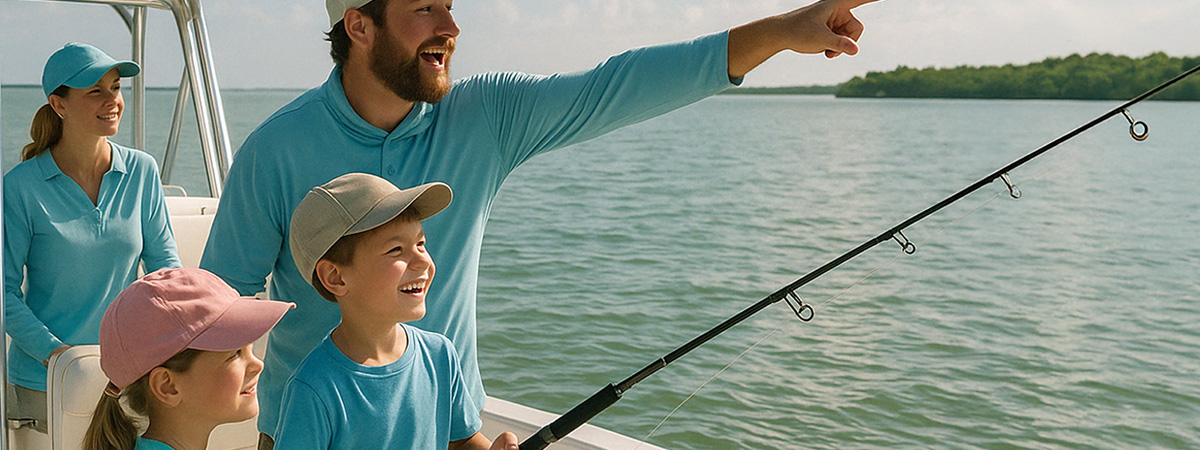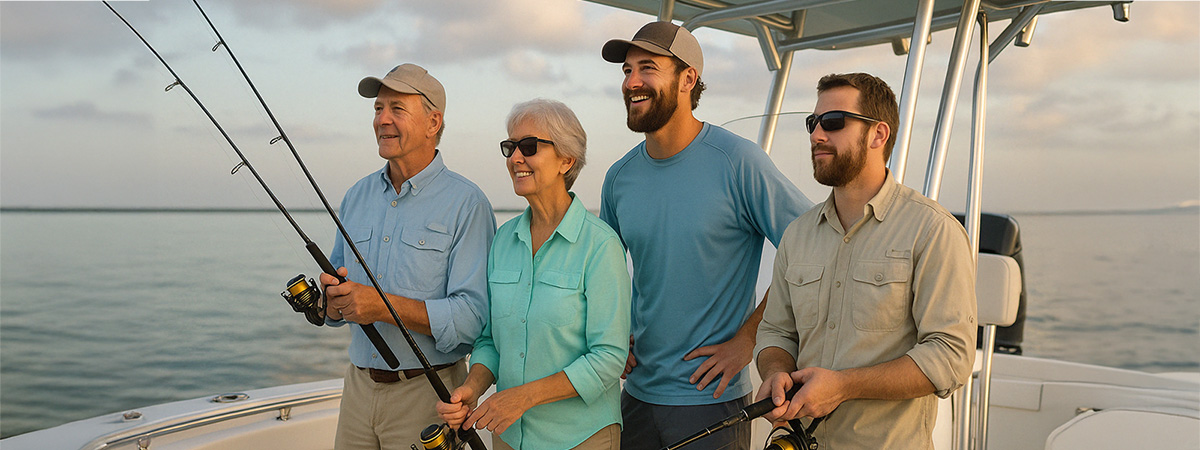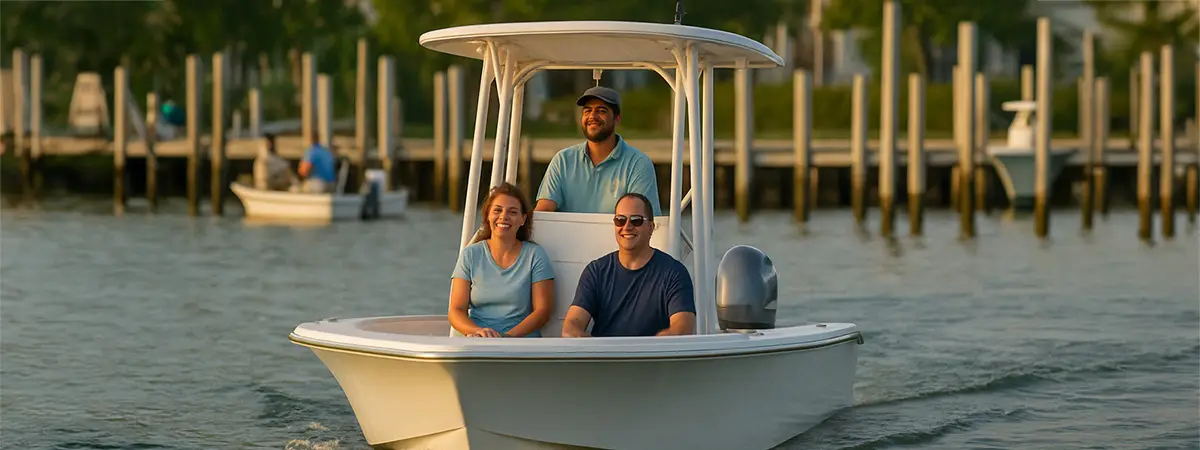Every fishing destination has its share of diversity—not just in species, but in the types of trips being offered. One guide might specialize in fly fishing for tarpon and permit. Another might focus on reef fishing for families. A third might run high-speed offshore trips chasing pelagics.
And yet, too often, charter websites and marketing materials try to speak to everyone.
The problem? When you try to appeal to everyone, you often connect with no one.
Whether you realize it or not, your business already attracts a certain type of client. The key is figuring out who that client is, who you want it to be, and making sure your marketing—from your photos and trip descriptions to your pricing and search terms—aligns accordingly.
This article explores how defining and reaching the right audience can shape your brand, drive better bookings, and make guiding more enjoyable.
Regional Diversity & Specialization

In most fishing destinations, there isn’t just one “type” of guide—and there shouldn’t be.
Even in a small town or island chain, you’ll often find a mix of offshore captains, backcountry guides, inshore light tackle specialists, fly fishing purists, and family-friendly charters. Each type of guide typically builds their business around a certain style of fishing or a mix of species that suits their skills, gear, and personal preferences.
And while some guides may lean heavily into a particular species—like tarpon, salmon, or musky—most don’t make a living targeting just one fish. Instead, they build their business around a broader category: flats fishing, light tackle, offshore trolling, fly fishing, drift boat trips, and so on. That category—and the experience that comes with it—is what clients are really buying into.
So, while your calendar may shift with the seasons, your identity as a guide often remains steady. That’s what clients connect with. Not just “What’s biting?”, but “What kind of trip is this, and is it the kind I’m looking for?”
Passion Creates Better Trips

The best trips don’t just come from good fishing—they come from good chemistry between guide and guest.
When a guide is passionate about what they do, it shows. Whether you’re poling a flat, bouncing bait over a reef, or watching a client hook their first fish, the energy you bring to the experience matters just as much as the outcome.
That’s why leaning into the kind of fishing you enjoy most isn’t just a selfish move—it’s smart business.
When your photos, trip descriptions, and social posts reflect the kind of trips that get you excited, the right clients pick up on that. They’re not just booking a trip—they’re booking your version of the trip. The one you know best, care about most, and are truly invested in delivering.
That authenticity can’t be faked, and it often turns a first-time client into a repeat one.
Brand Focus vs. Business Reality

Specializing in a certain type of trip or fishery can help set you apart—but it can also come with real limitations.
We’ve seen guides who are dialed in on a specific experience—permit on fly, winter steelhead, trophy musky—and they’re truly some of the best at what they do. But in some areas, there just aren’t enough of the right clients to sustain a business built on that specialty alone.
That’s the tough part: not every niche is big enough to fill a calendar.
So how do you build a brand without boxing yourself in?
It starts with leading confidently with your specialty—what you’re best at and most passionate about—while still making room for trip options that broaden your reach. You can be known for your signature offering without pretending it’s the only thing you do.
Think of it like a menu: your specialty is the dish you’re famous for, but it doesn’t mean you can’t offer a few solid sides to keep people coming back.
This approach keeps your brand focused while giving your business the flexibility it needs to thrive year-round.
Marketing Alignment: Where the Rubber Meets the Road

It’s one thing to know your ideal client. It’s another to actually attract them.
This is where many guides struggle—not on the water, but in their marketing.
Your specialty might be clear in your head, but if your website says “fun for the whole family,” your photos show kids with spinning rods, and your ads target generic terms like “fishing near me,” you’re probably not going to connect with the serious fly angler you’re hoping to guide.
Every part of your marketing—your photos, trip descriptions, keywords, blog content, ads, and even pricing—needs to work together to speak to the right audience.
If your focus is technical fly fishing, your messaging needs to reflect that. Show clean, quiet skiff setups, mention specific gear, and write trip descriptions that appeal to anglers who know the difference between a reach cast and a roll cast. If you’re running high-energy reef trips with kids and music, lean into that in your visuals and tone.
The more niche your audience, the more precise your message needs to be.
And yes, it might take more work to resonate with a smaller, more specific segment of anglers. But when you get it right? Those clients find you, book you, and come back—because they know they’ve found a guide who gets them.
Final Thought: Clarity Wins

At the end of the day, marketing isn’t about reaching the most people—it’s about reaching the right people.
When you clearly define what kind of trips you offer, what kind of angler you serve best, and what makes your approach different, everything else starts to fall into place. Your messaging gets sharper. Your reputation grows stronger. And your bookings start coming from clients who are a better fit—not just in terms of skill or interest, but in mindset.
So don’t worry about pleasing everyone. You’re not for everyone—and that’s exactly the point.